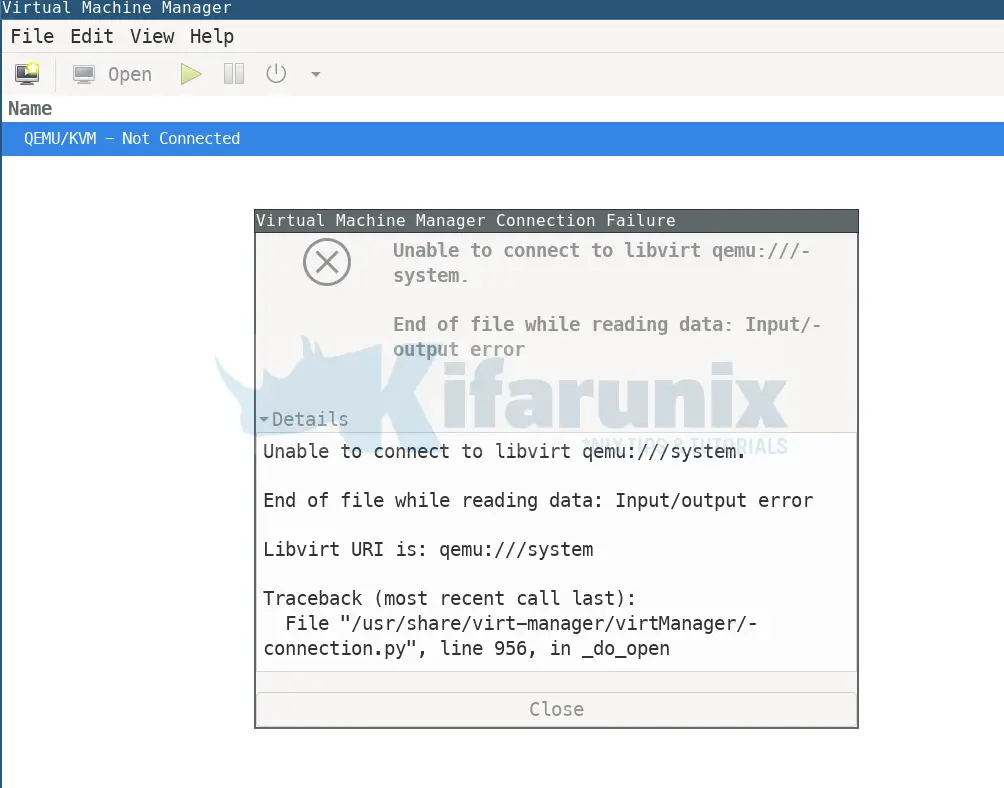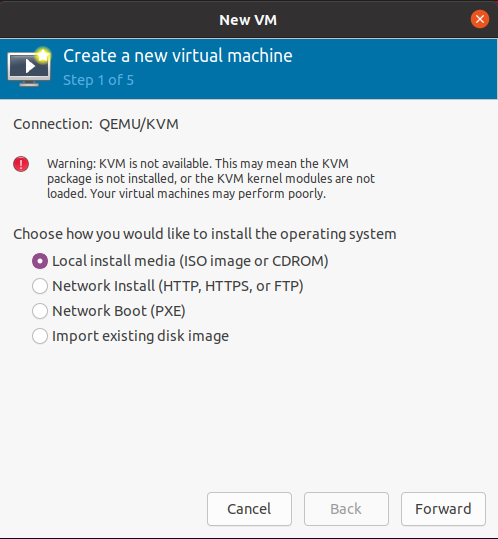
#Kvm vs qemu install
Download and Install the Softwareĭownload the Cumulus VX Qcow2 image for KVM. This section assumes you have Linux and KVM experience. The following procedure creates leaf01, leaf02, and spine01 and the network connections between them. These steps were tested with Cumulus VX 4.2, KVM/QEMU version 1:4.2-3ubuntu6.3, and Libvirt version 6.0.0 on Ubuntu Linux version 20.04. Create three VMs (leaf01, leaf02, and spine01) and the network connections between them.To facilitate additional configuration after the initial setup descibed in this guide, leaf01 and leaf02 also have two connections to each other. leaf01 and leaf02 connect to spine01, which is the aggregation layer switch on the network. In the topology, leaf01 and leaf02 are the access layer switches on the network.
#Kvm vs qemu how to
This section describes how to install and set up Cumulus VX with KVM/QEMU and Libvirt on a Linux server to create the two leaf and one spine topology shown below. It uses XML to represent and define the VM.


VMM doesn’t communicate directly with QEMU, so it’s not a QEMU client. They also run in separate processes.Īs explained here, libvirtd is a dæmon, which might qualify as a server process in your terminology. The GUI is similar to Virtual Machine Manager, and the VM engine is similar to KVM/QEMU.

The GUI you’re presumably used to is one component VMs can be run separately and managed using other tools, e.g.

VirtualBox is split into multiple components. VMM and the VMs it manages run in separate processes in QEMU’s case, VMM and QEMU communicate using Unix domain sockets (under /var/lib/libvirt/qemu). VMM isn’t a hypervisor itself, it’s a GUI used to manage virtual machines (and LXC containers). The virt-manager application is a desktop user interface for managing virtual machines through libvirt. I’m not sure why the Wikipedia article links that particular phrase to the hypervisor article the description of Virtual Machine Manager on its own web site is more accurate:


 0 kommentar(er)
0 kommentar(er)
